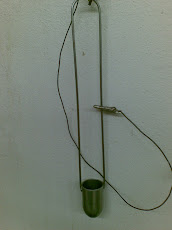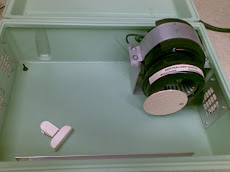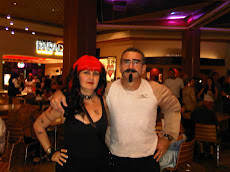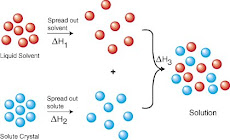NEWS SERVICES
210 Pittsboro Street
Campus Box 6210
Chapel Hill, NC 27599-6210
T 919-962-2091
F 919-962-2279
www.unc.edu/news/
news@unc.edu
News Release
For immediate use March 10, 2005 -- No. 94
Study: soap and water work best
in ridding hands of disease viruses
By DAVID WILLIAMSON
UNC News Services
CHAPEL HILL – The largest, most comprehensive study ever done comparing the effectiveness of hand hygiene products shows that nothing works better in getting rid of disease-causing viruses than simply washing one’s hands with good old-fashioned soap and water.
Among the viruses soapy hand washing flushes down the drain is the one that causes the common cold. Other removable viruses cause hepatitis A, acute gastroenteritis and a host of other illnesses.
A separate key finding was that waterless handwipes only removed roughly 50 percent of bacteria from volunteer subjects’ hands.
"We studied the efficacy of 14 different hand hygiene agents in reducing bacteria and viruses from the hands," said Emily E. Sickbert-Bennett, a public health epidemiologist with the University of North Carolina Health Care System and the UNC School of Public Health. "No other studies have measured the effectiveness in removing both bacteria and viruses at the same time."
For the first time, too, the UNC researchers tested what happened when people cleaned their hands for only 10 seconds, Sickbert-Bennett said. That represented the average length of time researchers observed busy health-care personnel washing or otherwise disinfecting their hands at work.
"Previous studies have had people clean their hands for 30 seconds or so, but that’s not what health-care workers usually do in practice, and we wanted to test the products under realistic conditions," she said.
Anti-microbial agents were best at reducing bacteria on hands, but waterless, alcohol-based agents had variable and sometimes poor effects, becoming less effective after multiple washes, Sickbert-Bennett said. For removing viruses from the hands, physical removal with soap and water was most effective since some viruses are hardy and relatively resistant to disinfection.
A report on the findings appears in the March issue of the American Journal of Infection Control. Other authors are Drs. William A. Rutala and David J. Weber, professors of medicine and epidemiology at the UNC schools of medicine and public health; Dr. Mark D. Sobsey, professor of environmental sciences and engineering in public health; and medical technologist Maria F. Gergen-Teague. Dr. Gregory P. Samsa, a Duke University biostatistician, helped analyze the data.
"These findings are important because health-care associated infections rank in the top five causes of death, with an estimated 90,000 deaths each year in the United States," Rutala said. "Hand hygiene agents have been shown to reduce the incidence of health-care associated infections, and a variety of hand hygiene agents are now available with different active ingredients and application methods.
"Our study showed that the anti-microbial hand washing agents were significantly more effective in reducing bacteria than the alcohol-based handrubs and waterless handwipes," he said. "Our study also showed that, at a short exposure time of 10 seconds, all agents with the exception of handwipes demonstrated a 90 percent reduction of bacteria on the hands."
Alcohol-based handrubs were generally ineffective in demonstrating a significant reduction of a relatively resistant virus, Rutala said. While the use of alcohol-based handrubs will continue to be an important infection control measure, it is important to recommend or require traditional hand washing with soap and water throughout each day.
Researchers first had volunteers clean their hands and then contaminated their hands with Serratia marcescens and MS2 bacteriophage. Those are, respectively, a harmless bacterium and virus comparable to, and substituted for, disease-causing organisms. After that, scientists had the subjects clean their hands with various agents and measured how much of the bacteria and virus remained afterwards.
Sixty-two adults volunteered for and participated in the study. Investigators performed five evaluations on each of the 14 agents. The N.C. Statewide Program for Infection Control and Epidemiology supported the research.
Background
Health care-associated infections most commonly result from person-to-person transmission via the hands of health care workers.
Methods
We studied the efficacy of hand hygiene agents (n = 14) following 10-second applications to reduce the level of challenge organisms (Serratia marcescens and MS2 bacteriophage) from the hands of healthy volunteers using the ASTM-E-1174-94 test method.
Results
The highest log10 reductions of S marcescens were achieved with agents containing chlorhexidine gluconate (CHG), triclosan, benzethonium chloride, and the controls, tap water alone and nonantimicrobial soap and water (episode 1 of hand hygiene, 1.60-2.01; episode 10, 1.60-3.63). Handwipes but not alcohol-based handrubs were significantly inferior from these agents after a single episode of hand hygiene, but both groups were significantly inferior after 10 episodes. After a single episode of hand hygiene, alcohol/silver iodide, CHG, triclosan, and benzethonium chloride were similar to the controls in reduction of MS2, but, in general, handwipes and alcohol-based handrubs showed significantly lower efficacy. After 10 episodes, only benzethonium chloride (1.33) performed as well as the controls (1.59-1.89) in the reduction of MS2.
Conclusions
Antimicrobial handwashing agents were the most efficacious in bacterial removal, whereas waterless agents showed variable efficacy. Alcohol-based handrubs compared with other products demonstrated better efficacy after a single episode of hand hygiene than after 10 episodes. Effective hand hygiene for high levels of viral contamination with a nonenveloped virus was best achieved by physical removal with a nonantimicrobial soap or tap water alone.
jueves, 28 de julio de 2011
CRITICAL HAND DISINFECTION
miércoles, 20 de julio de 2011
ECOLAB'S NEW MOVE
World News and Views :: Top of the News
Ecolab to Acquire Nalco for $8.1 Billion
8:41 AM MDT | July 20, 2011 | Natasha Alperowicz
Ecolab has agreed to acquire Nalco for $8.1 billion, in a bid to extend its leading franchise in industrial and institutional cleaning and sanitizing products and services into water treatment. Nalco is the world's leading water treatment company, offering water management services focused on industrial, energy, and institutional market segments with sales of $4.3 billion last year.
Nalco shareholders will have the option to receive 0.7005 shares of Ecolab common stock or $38.80/share in cash subject to proration so that the overall consideration paid to Nalco shareholders will be approximately 70% in Ecolab shares and 30% cash. The stock component of the deal will represent a tax-free exchange, the companies say. Ecolab will issue approximately 68.9 million shares of Ecolab stock and pay approximately $1.6 billion in cash to Nalco shareholders. This represents a fully diluted offer value for Nalco's equity of $5.4 billion plus $2.7 billion in Nalco debt.
The transaction is expected to close in the fourth quarter, subject to closing conditions and regulatory clearance, as well as approval from Ecolab and Nalco shareholders.
The transaction combines Nalco's leading positions in water and energy services with Ecolab's strength in the food and beverage, healthcare, and institutional markets, says J. Erik Fyrwald, Nalco chairman and CEO. "Moreover, this transaction delivers substantial value to our shareholders through an immediate premium to Nalco's share price as well as the opportunity to participate in the upside potential of the combined company," he says.
"Through our participation in the water sector and our strategic planning work, we identified water management as a key future growth segment for us given its growth characteristics and importance to our customers," says Douglas Baker Jr., Ecolab chairman and CEO. "Nalco's water, and oil and gas services and markets in particular represent excellent long-term growth potential as the world deals with the quality, cost, and availability of those key natural resources."
Ecolab has sales of $6 billion/year and employs more than 26,000. It is the global leader in cleaning, sanitizing, food safety, and infection prevention products and services. Nalco is focused on industrial water, energy, and air applications. The company employs 12,000. Ecolab would be the latest in a succession of owners of Nalco in recent years. The company was acquired by Suez of France in 1999, followed by a buyout consortium comprising Blackstone, Apollo Management, and Goldman Sachs. Nalco returned to public ownership in 2004.
Vistas de página en total
GREEN CHEMICALS
Also the materials have to meet with toxicity and health requirements regarding inhalation, dermal and eye contact. There is also a specific list of materials that are prohibited or restricted from formulations, like ozone-depleting compounds and alkylphenol ethoxylates amongst others. Please go to http://www.greenseal.com/ for complete information on their requirements.
For information on current issues regarding green chemicals, see the blog from the Journalist Doris De Guzman, in the ICIS at: http://www.icis.com/blogs/green-chemicals/.
Certification is an important — and confusing — aspect of green cleaning. Third-party certification is available for products that meet standards set by Green Seal, EcoLogo, Energy Star, the Carpet & Rug Institute and others.
Manufacturers can also hire independent labs to determine whether a product is environmentally preferable and then place the manufacturer’s own eco-logo on the product; this is called self-certification. Finally, some manufacturers label a product with words like “sustainable,” “green,” or “earth friendly” without any third-party verification.
“The fact that there is not a single authoritative standard to go by adds to the confusion,” says Steven L. Mack M.Ed., director of buildings and grounds service for Ohio University, Athens, Ohio.
In www.happi.com of June 2008 edition, there is a report of Natural formulating markets that also emphasises the fact that registration of "green formulas" is very confused at present, due to lack of direction and unification of criteria and that some governmental instittion (in my opinion the EPA) should take part in this very important issue.










































